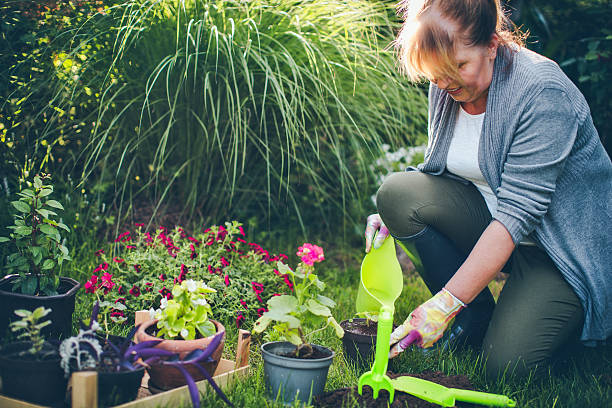Planting seedlings and caring for roses are two rewarding gardening activities that can transform any garden into a vibrant and thriving space. Whether you’re a seasoned gardener or a novice, understanding the correct techniques for planting seedlings and properly watering roses is essential for healthy growth and bountiful blooms. This guide will walk you through everything you need to know about preparing, planting, and nurturing your seedlings and roses.
Part 1: Planting Seedlings
1- Choosing the Right Seedlings
Before planting seedlings, it’s important to select healthy ones. Look for seedlings that have:
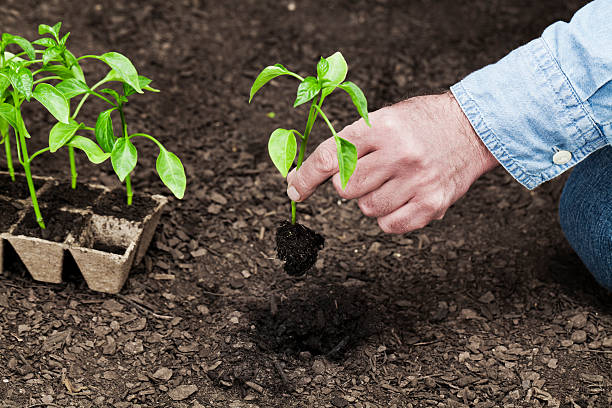
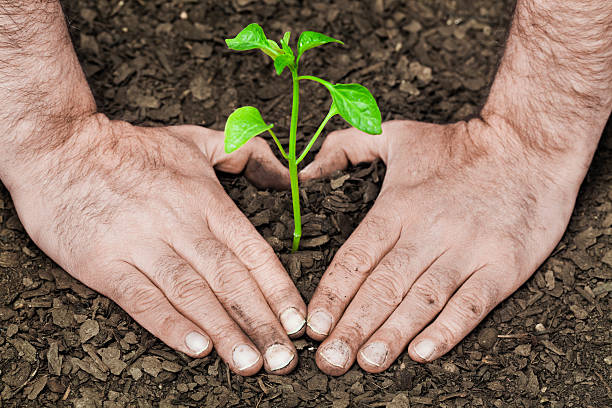
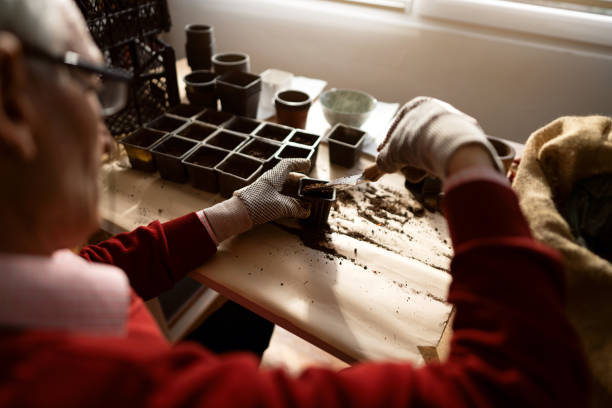


- Strong stems: Avoid spindly, weak seedlings. The stems should be sturdy and upright.
- Healthy leaves: Choose seedlings with bright, vibrant green leaves that are free from spots, yellowing, or other signs of disease.
- Good root systems: The roots should be white and well-developed but not overcrowded or “root-bound” (when roots are growing in circles within the pot).
Seedlings are available for a variety of plants, from vegetables like tomatoes and peppers to flowering plants like zinnias and petunias. Whether you’re starting your garden from scratch or adding new plants to an existing garden, choosing high-quality seedlings sets the foundation for success.
2- Preparing the Soil
The quality of your soil plays a major role in how well your seedlings will grow. Here are some steps to prepare your garden soil:
- Test the soil: If possible, test the pH and nutrient levels of your soil. Most plants prefer a slightly acidic to neutral soil with a pH of 6.0 to 7.0.
- Add organic matter: Enrich the soil with organic matter such as compost, aged manure, or peat moss to improve drainage and provide nutrients for the seedlings.
- Loosen the soil: Use a garden fork or spade to loosen the soil to a depth of about 12 inches. This helps the roots to penetrate easily and prevents soil compaction.
3- Planting the Seedlings
Once the soil is ready, follow these steps to plant your seedlings:
- Water the seedlings: Before planting, water the seedlings while they are still in their pots or trays to reduce transplant shock.
- Dig the hole: Dig a hole that is twice as wide and just as deep as the seedling’s root ball. The extra space gives the roots room to grow.
- Place the seedling: Gently remove the seedling from its container, being careful not to damage the roots. Place the seedling into the hole, ensuring it sits at the same depth it was in the pot. If planted too deep, the seedling might rot; if too shallow, the roots could dry out.
- Backfill and firm the soil: Fill the hole with soil and gently press it down around the seedling to remove air pockets. Be careful not to pack the soil too tightly, as this can hinder root growth.
- Water immediately: After planting, water the seedling thoroughly to settle the soil and help establish the roots.
4- Mulching and Protecting Seedlings
Mulch helps retain moisture in the soil, suppress weeds, and maintain an even soil temperature. Apply a 2-3 inch layer of mulch around the base of the seedlings, but keep it a few inches away from the stems to prevent rot.
If you are planting in an area with pests like rabbits or slugs, consider using protective covers like row covers or wire mesh to safeguard your seedlings.
Part 2: Watering Roses
Roses are among the most cherished and beautiful flowering plants, but they can also be demanding when it comes to care, particularly watering. Proper watering is key to ensuring that your roses bloom profusely and remain healthy throughout the growing season.
1- Understanding Rose Watering Needs
Roses are deep-rooted plants and require regular watering, especially during hot, dry spells. However, it’s important to strike the right balance, as too much water can lead to root rot and fungal diseases, while too little water can cause stress and reduce blooming.
Generally, roses need about 1-2 inches of water per week, either from rainfall or supplemental watering. The goal is to ensure the water reaches deep into the soil where the roots are growing.
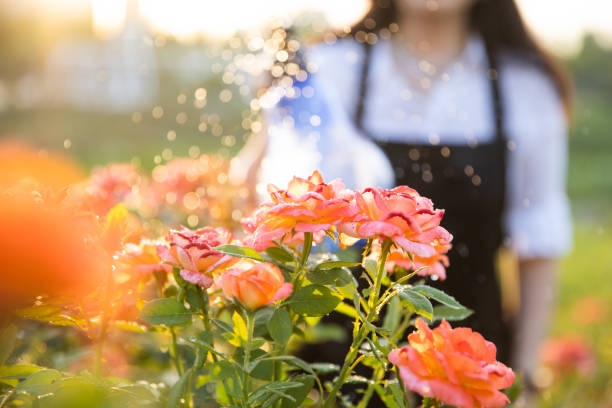
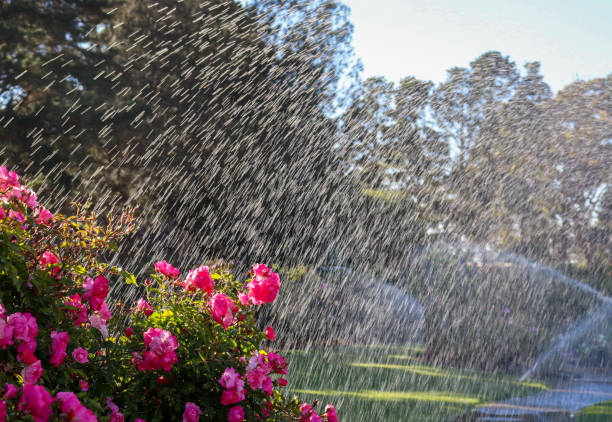
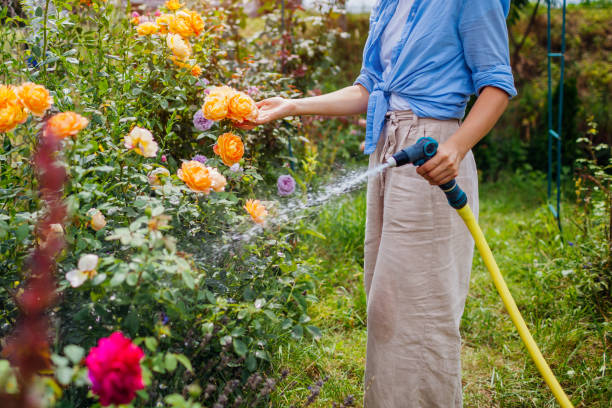
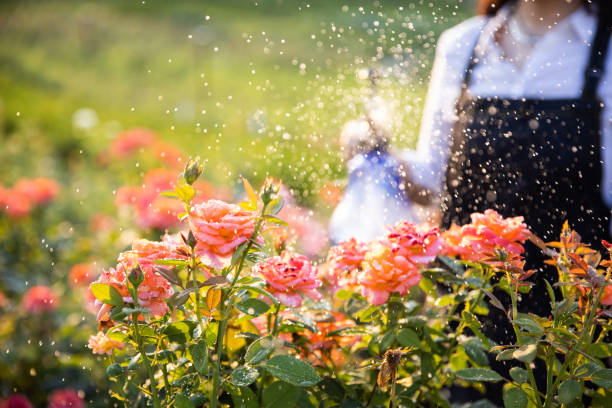
2- When to Water Roses
The timing of your watering is crucial for rose health:
- Water in the morning: The best time to water roses is in the early morning. This allows the leaves to dry off before the heat of the day, reducing the risk of fungal diseases like black spots and powdery mildew.
- Water deeply and infrequently: It’s better to water roses deeply once or twice a week rather than giving them light, frequent watering. Deep watering encourages the roots to grow downwards, which increases the plant’s drought tolerance.
3- Watering Techniques for Roses
Here are some effective techniques for watering roses:
- Water at the base: Avoid getting the leaves wet, as this can promote fungal diseases. Instead, water is at the base of the plant, focusing on the soil around the roots.
- Soaker hoses or drip irrigation: These systems are ideal for watering roses as they deliver water directly to the root zone without wetting the leaves. They also provide slow, deep watering, which is perfect for roses.
- Use a watering can or garden hose: If you water by hand, be sure to direct the flow of water to the base of the rose bush. A slow, steady stream is best, allowing the water to penetrate the soil rather than running off.
4- Signs of Overwatering and Underwatering
It’s important to monitor your roses for signs that they are either getting too much or too little water:
- Overwatering signs: Yellow leaves, especially at the base of the plant, can indicate overwatering. Overwatered roses may also develop root rot, leading to wilting despite the presence of moisture in the soil.
- Underwatering signs: Wilting, dry, and crispy leaves are common signs of underwatering. If the leaves begin to curl or brown at the edges, it may be a sign that your roses need more water.
5- Mulching Roses
Mulch plays an important role in maintaining the right moisture level in your rose garden. Apply a 2-3 inch layer of organic mulch, such as wood chips or shredded bark, around the base of your roses. This will help conserve moisture, regulate soil temperature, and prevent weed growth.
6- Fertilizing and Watering
Roses are heavy feeders and will benefit from regular fertilization, especially during the growing season. However, it’s important to water your roses well both before and after applying fertilizer. Watering beforehand prevents root burn while watering afterward helps the nutrients soak into the soil.
Conclusion
Both planting seedlings and watering roses require thoughtful attention and care, but the rewards are well worth the effort. By selecting healthy seedlings, preparing your soil properly, and planting with care, you give your plants the best possible start. Likewise, by learning the correct watering techniques for roses and paying close attention to their needs, you’ll be rewarded with robust growth and beautiful blooms throughout the season.
Gardening is as much an art as it is a science, and every garden is unique. As you plant seedlings and care for roses, take the time to observe your plants closely and adjust your approach based on their specific needs. With patience, care, and a little love, your garden will flourish

